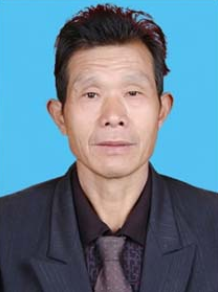
Preface
In today’s daily life, ceramics has become a common product, with a variety of categories. However, how many ordinary people know whether the materials of these products are ceramic or porcelain, what are the differences and connections between the two, how the ceramics are made, what is the process of its development and evolution, how its skills are inherited, how is the relationship between ceramics and Chinese traditional culture, and how its influence in the world is? It is no doubt that it’s hard to answer.
In recent years, the improvement of the people’s material living standard has triggered the demand for spiritual culture. The society’s attention to traditional culture and the development of tourism economy have stimulated the economy of antiques and artworks. The collection activities have gradually gone out of the original intellectuals based literati level, and extended to all social strata and groups of different ages. Folk collection organizations have also been established, and a number of private museums have emerged, and folk collection activities have shown unprecedented prosperity. The intangible cultural heritage has rich and unique cultural connotation, which embodies the spirit of the Chinese nation in the transmission. Our first task is to inherit and carry forward the essence of traditional skills handed down from generation to generation. Nowadays, many of the past brilliant “non heritage” skills are on the verge of extinction, so the main purpose of the book is to preserve the essence skills.
In the compilation and revision of this book, due to the lack of detailed data collection and the limitation of the editor’s level, there are inevitably errors and mistakes in this book. Readers are welcome to criticize and correct it.
前 言
在当今人们的日常生活中,陶瓷已经成为一种司空见惯的产品,其品类林林总总,形形色色,五花八门。但是,普通民众又有多少人知道,这些产品的材质到底是陶的还是瓷的,两者有什么区别和联系,陶瓷是如何制作出来的,其发展演变的过程如何,其技艺又是如何传承下来的,陶瓷与中国传统文化的关系如何,在世界上的影响力如何等,这些问题对于他们来说,无疑是很难回答出来的。
近年来,人民群众物质生活水平的提高引发了对精神文化的需求,社会对传统文化的重视以及旅游经济的发展又刺激了古玩艺术品经济升温。收藏活动逐渐走出原来的以知识分子为主的文人雅士的层面,扩展到社会的各个阶层、不同年龄段群体。民间收藏组织也相继成立,并出现了一批私立博物馆,民间收藏活动呈现出前所未有的繁荣景象。非物质文化遗产具有丰富而独特的文化内涵,它在薪火相传中体现了中华民族的精神。我们的首要任务就是传承,将祖祖辈辈流传下来的传统技艺的精华保留下来并发扬光大。如今,很多昔日辉煌的“非遗”技艺濒临失传,故丛书的首要目的就是留存精华技艺。
本书在编写和修订中由于资料的收集尚欠详尽,加之编者水平所限,难免有错
误和不当之处,敬请读者指正。

Qun-Shan Lu, male, the Han nationality, CPC member, senior artist and craftsman, Master of Chinese Ceramic Art, one of the first batch of national intangible cultural heritage inheritors, folk craftsmen, outstanding inheritor of folk culture, Anhui arts and crafts master, member of Chinese Folk Literature and Art Association, member of China National Arts and Crafts Society, member of China Arts and Crafts Encyclopedia, director of Anhui Arts & Crafts Association, director of Anhui Arts & Crafts Encyclopedia, member of Anhui Folk Artists Association. At present, he is the art director of Lu’s Engraved and Painted Pottery Institute.
卢群山,男,汉族,中共党员。高级工艺美术师、中国陶瓷艺术大师,首批国家级非遗传承人、民间工艺大师、民间文化杰出传承人、安徽省工艺美术大师、中国民协会员、中国工艺美术学会会员,中国工艺美术协会会员,安徽省工艺美术学会理事、安徽省工艺美术协会理事、安徽省民间文艺家协会会员、现任卢氏刻花彩陶传习所艺术总监。